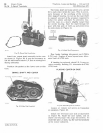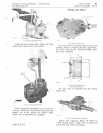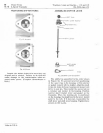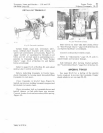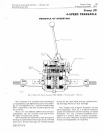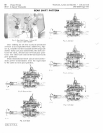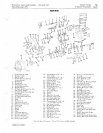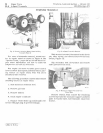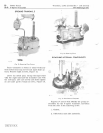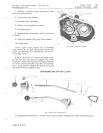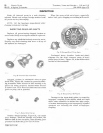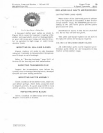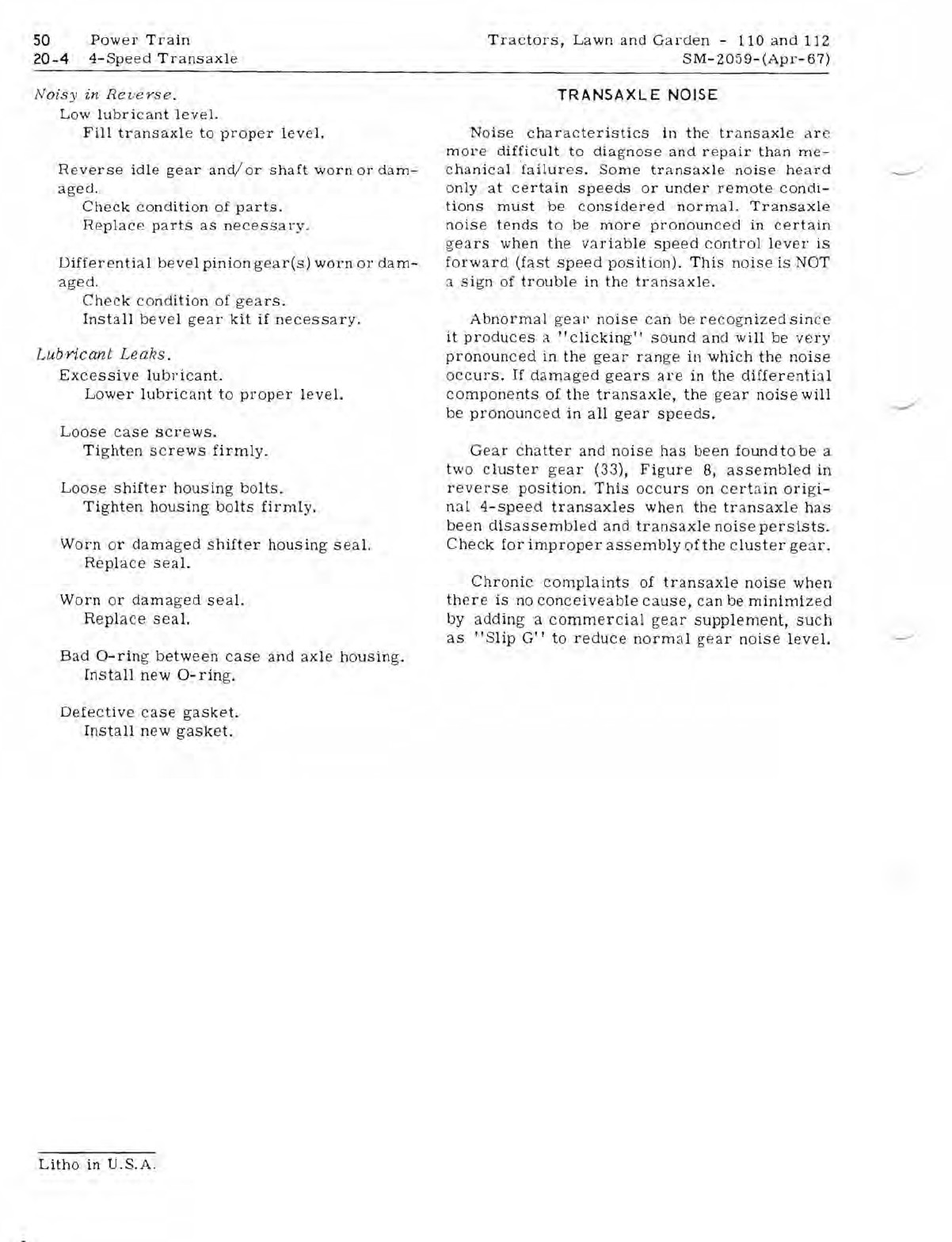
50
Power
Train
Tractors,
Lawn
and
Garden
-
110
and
112
20-4
4-Speed
Transaxle
SM-
2059-
(Apr-
67)
Noisy
in
Re
v
erse.
Low
lubricant
level.
Fill
transaxle
to
proper
level.
Reverse
idle
gear
and/
or
shaft
worn
or
dam-
aged.
Check
condition
of
parts.
Replace
parts
as
necessary.
Differential
bevel
pinion
gear(s)
worn
or
dam-
aged.
Check
condition
of
gears.
Install
bevel
gear
kit
if
necessary.
Lubricant
Leaks.
Excessive
lubricant.
Lower
lubricant
to
proper
level.
Loose
case
screws.
Tighten
screws
firmly.
Loose
shifter
housing
bolts.
Tighten
housing
bolts
firmly.
Worn
or
damaged
shifter
housing
seal.
Replace
seal.
Worn
or
damaged
seal.
Replace
seal.
Bad
O-ring
between
case
and
axle
housing.
Install
new
0-
ring.
Defective
case
gasket.
Install
new
gasket.
TRANSAXLE
NOISE
Noise
characteristics
in
the
transaxle
are
more
difficult
to
diagnose
and
repair
than
me-
chanicalfailures.
Some
transaxle
noise
heard
only
at
certain
speeds
or
under
remote
condi-
tions
must
be
considered
normal.
Transaxle
noise
tends
to
be
more
pronounced
in
certain
gears
when
the
variable
speed
control
lever
is
forward
(fast
speed
position).
This
noise
is
NOT
:1
sign
of
trouble
in
the
transaxle.
Abnormal
gear
noise
can
be
recognized
since
it
produces
a
"clicking"
sound
and
will
be
very
pronounced
in
the
gear
range
in
which
the
noise
occurs.
If
damaged
gears
are
in
the
differenti:::ll
components
of
the
trans
axle,
the
gear
noise
will
be
pronounced
in
all
gear
speeds.
Gear
chatter
and
noise
has
been
found
to
be
a
two
cluster
gear
(33),
Figure
8,
assembled
in
reverse
position.
This
occurs
on
certain
origi-
nal
4-speed
transaxles
when
the
transaxle
has
been
disassembled
and
transaxle
noise
persists.
Check
for
improper
assembly
(lfthe
cluster
gear.
Chronic
complaints
of
transaxle
noise
when
there
is
no
conceiveable
cause,
can
be
minimized
by
adding
a
commercial
gear
supplement,
such
as
"Slip
Gil
to
reduce
normal
ge
ar
noise
level.
Litho
in
U.S.A.



